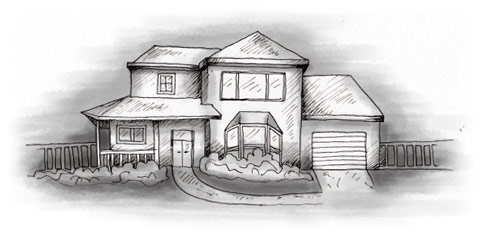There is, however, a huge gulf between Auckland and the rest of the country. Property is much more expensive in Auckland, mainly because most of the best paid jobs are to be found there. Auckland also has one of the better climates in New Zealand, and prices are further increased because a majority of immigrants make Auckland their first choice. Wellington is the country’s second most expensive area for property purchase. Price variations are less marked throughout the rest of the country.
After some years of large annual increases in house prices between 2001 and 2007 there was a drop in 2008. Since 2012 the property market has been on the rise and it remains strong and buoyant in 2014. The national average house price in New Zealand in by the end of February 2014 had risen by 8.64% to NZ$415,000 (US $354,547). There was a rise in house prices in 11 out of 12 of the regions in New Zealand, the biggest of which was seen in Canterbury/Westland with 12.4%. This was closely followed by Auckland with 10.7% increase and Southland with 8.3%.
The following average house price figures were released by the Real Estate Institute:
| City/Area | April 2014 | September 2014 |
| Auckland | $611,500 | $615,000 |
| Canterbury/Westland | $395,000 | $413,000 |
| Hawkes Bay | $269,000 | $258,500 |
| Manawatu/Wanganui | $229,355 | $220,000 |
| Nelson/Marlborough | $360,000 | $347,750 |
| Northland | $345,000 | $267,750 |
| Otago | $241,500 | $250,000 |
| Southland | $190,000 | $197,500 |
| Taranaki | $310,000 | $317,375 |
| Waikato/BoP/Gisborne | $348,000 | $333,500 |
| Wellington | $415,000 | $400,000 |
Apartments are often as expensive as houses and townhouses (or even more so), as they’re invariably located in city centres, whereas most houses are in the suburbs or the country. Advertised prices are usually around 3 to 8 per cent above a property’s true market value and substantially above its rateable value.
When calculating your budget, you should also allow for lawyer’s fees and bear in mind that banks charge a mortgage processing fee equal to 1 per cent of the mortgage amount and require a deposit on application.
Lifestyle Plots
The term ‘lifestyle plot’ or ‘block’ refers to a kind of smallholding – a plot of (often) undeveloped land, usually in the country. Buyers of lifestyle plots tend to be independent, rustic types who yearn for a more rural way of life. They often build their own home on the plot (or have one built) and may keep horses or ponies or a few farm animals in addition to growing their own vegetables.
Lifestyle plots are available in many areas and are usually temptingly cheap. When buying a lifestyle plot, the main points to check are that mains services are available nearby and the cost of connecting to them, and that the land is suitable for agricultural purposes, e.g. the quality of the soil, and available water for irrigation. If you plan to keep animals, good fencing (preferably post and rail) should be included, as the cost of fencing a large plot can be high.
Finally, you should check any development plans for the area, as there have been a number of cases where buyers planning a life of seclusion have found some years later that their plot adjoins an industrial park or is divided by a main road. In September 2014, the median price per hectare was $26,000, however you can expect to pay from $800,000 to $3 million for the high-end lifestyle blocks which are becoming more popular for retirees. If the plot is within commuting distance of Auckland the high-end lifestyle blocks become more common. The most expensive region, according to statistics collected by The Real Estate Institutes public report (September 2014) is Bay of Plenty with median prices of a whopping $456,326 per hectare for arable land, followed by Auckland at $331,384.

